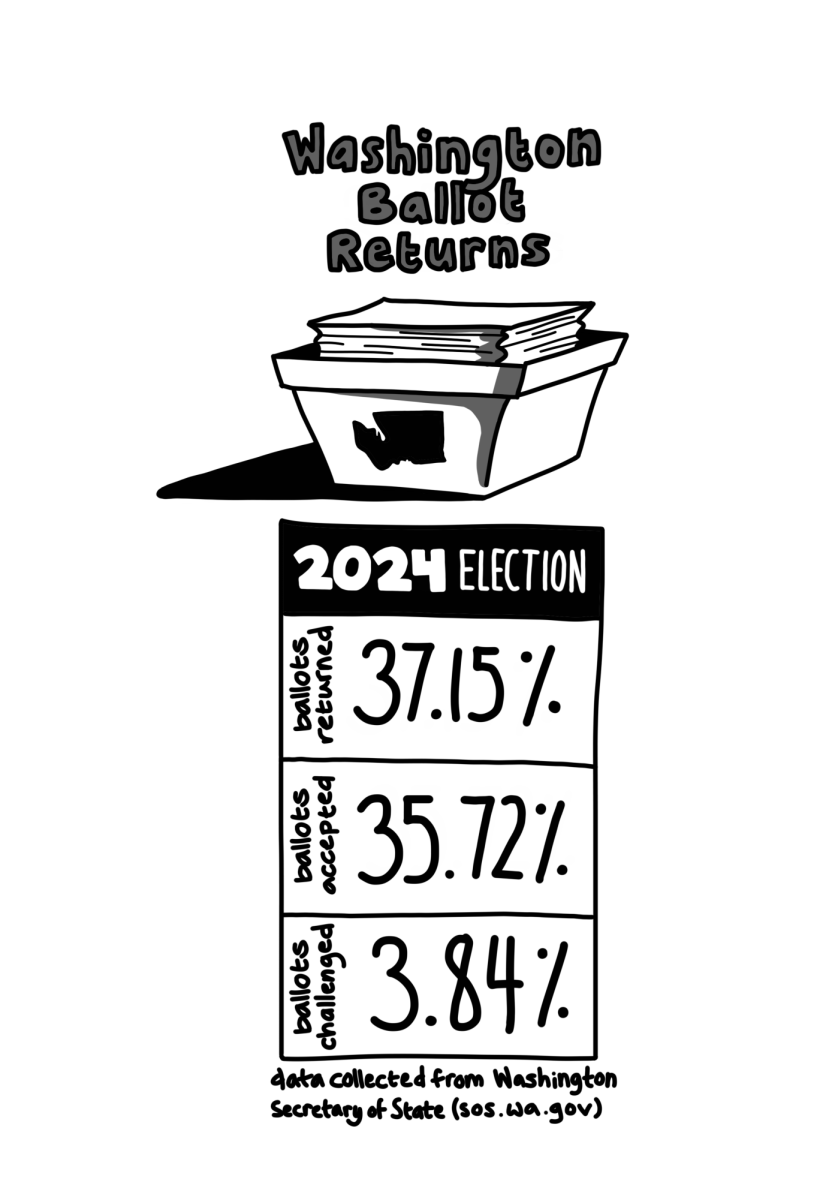Approximately 650 Whitman students received an e-mail from Whitman College Technology Services (WCTS) in early November notifying them of their paper consumption.
“To raise awareness of paper consumption on campus, we are contacting everyone who exceeds the median amount of printing among students,” the e-mail read; it also included printing statistics collected by WCTS over the course of the fall 2008 semester.
There are 1305 students who are networked printer users, meaning that they log in and print from Whitman computers such as those in Penrose Library, Olin and Maxey Halls and the Science Building. The average number of pages printed per user is 270 and the median number is 183.
According to WCTS’ summary of user print consumption, 50 percent of students have printed between one and 250 pages, while 90 percent have printed between one and 600 pages.
WCTS began tracking student paper consumption this semester as part of an ongoing larger project, in conjunction with the Whitman Conservation Committee, to reduce campus paper use. WCTS and the Conservation Committee are currently discussing the idea of implementing a printing quota for students in the near future.
This proposal was unveiled to the Whitman Community at the Nov. 20, 2008 Conservation Committee Meeting.
The college purchased 880 cases of printer paper for the 2008-2009 academic year. At 5000 sheets a case, this amounts to a total of 4,400,000 sheets of paper, costing the college over $32,000 annually. Furthermore, given that the overall cost of printing also includes expenses for printer maintenance and toner cartridges, the cost of paper is only a fraction of the total expenditures.
The increase in the use of electronic and online resources has resulted in a slight decline in the demand for paper printouts; however, this reduction is nowhere close to what is needed to significantly conserve paper resources and printing expenditures.
The financial strain the college is currently facing under the economic recession, along with Whitman College President George Bridges’ subsequent request that all campus departments make a concerted effort to conserve both resources and savings, has created an added incentive for the implementation of a printing quota.
“The primary reason behind [the quota] is resource conservation, though there is potential for some cost savings as has been the case at other institutions that began charging for excessive printing,” said WCTS middleware analyst Mike Osterman in an e-mail.
The Olin Hall Math Lab, for example, which is managed by the Mathematics Department, has printing quotas for the students who use its services. Since the implementation of the quota, the lab has seen a reduction in paper printouts.
Under the proposed quota system, black-and-white printing would cost five cents a page and color printing 50 cents a page. According to Osterman, these costs take into account not only the cost of paper, but also those of printer maintenance and toner; thus they are reflective of the true approximate costs of printing.
If such a quota is implemented, students will receive a predetermined amount of printing credit on their student account each semester. As they release print jobs, the appropriate monetary amount will be deducted from their account. Students who exceed 90 percent of their printing credit will be sent a warning message, giving them the option to approve the addition of more credit to their account. At that point, they will only be charged for actual pages printed beyond the quota.
“If there is to be a quota, it will be determined based on usage statistics collected this semester,” said Osterman. “We will share and discuss the findings with the Conservation Committee and find a number that is reasonable for most students.”
According to junior Steve Shoemaker, the Outhouse Resident Assistant and a member of the Conservation Committee, everyone in attendance at the Conservation Committee meeting agreed that the college must undertake some effort to reduce paper consumption. However, he expressed his concerns over the proposed printing quota, especially on the affect it will have on students who are required to print off large amounts of readings for their classes.
“I think immediately charging students who go over a certain quota will only address one side of the problem,” Shoemaker said. “There needs to be a rethinking on both the part of the students and the faculty. Faculty members are the ones assigning and requiring that students bring their readings to class. Students are, for the most part, being conscious to print double-sided and to not bring more to class than they need. Students and faculty should both share the burden.”
The proposed quota is not a definite, and the logistics of such a quota are still in discussion by WCTS and the Conservation Committee. The Conservation Committee welcomes input from the Whitman Community and invites students, faculty and staff to attend one of their weekly meetings. Meetings are held every Thursday at noon in Maxey 142.








Anastasia • Dec 7, 2008 at 4:43 pm
While I admire the effort to help students consider their printing habits (not to force environmentalism upon students but to inform them) and acknowledge the need to cut expenditures, I think that a printing quota is problematic. As Shoemaker says, there are some people whose departments require more printed handouts. There are also some among us who cannot retain information read from a screen. There is a huge difference between the printed word and the word on a screen.
I also feel that if a quota IS instated despite the concerns about it and the logistical tangles (particularly the vastly varying printing needs across the student body), there should be an application process for an increased number of pages for those of us who need to print more.